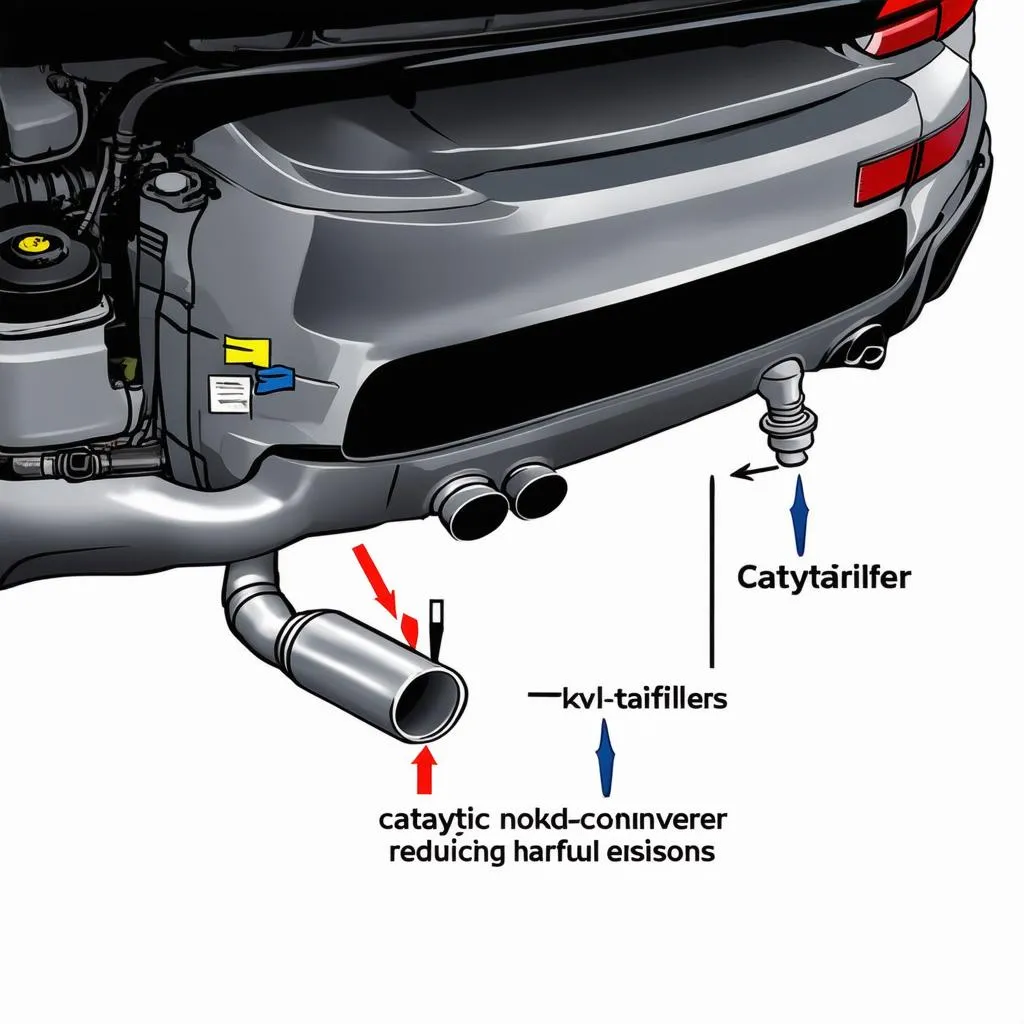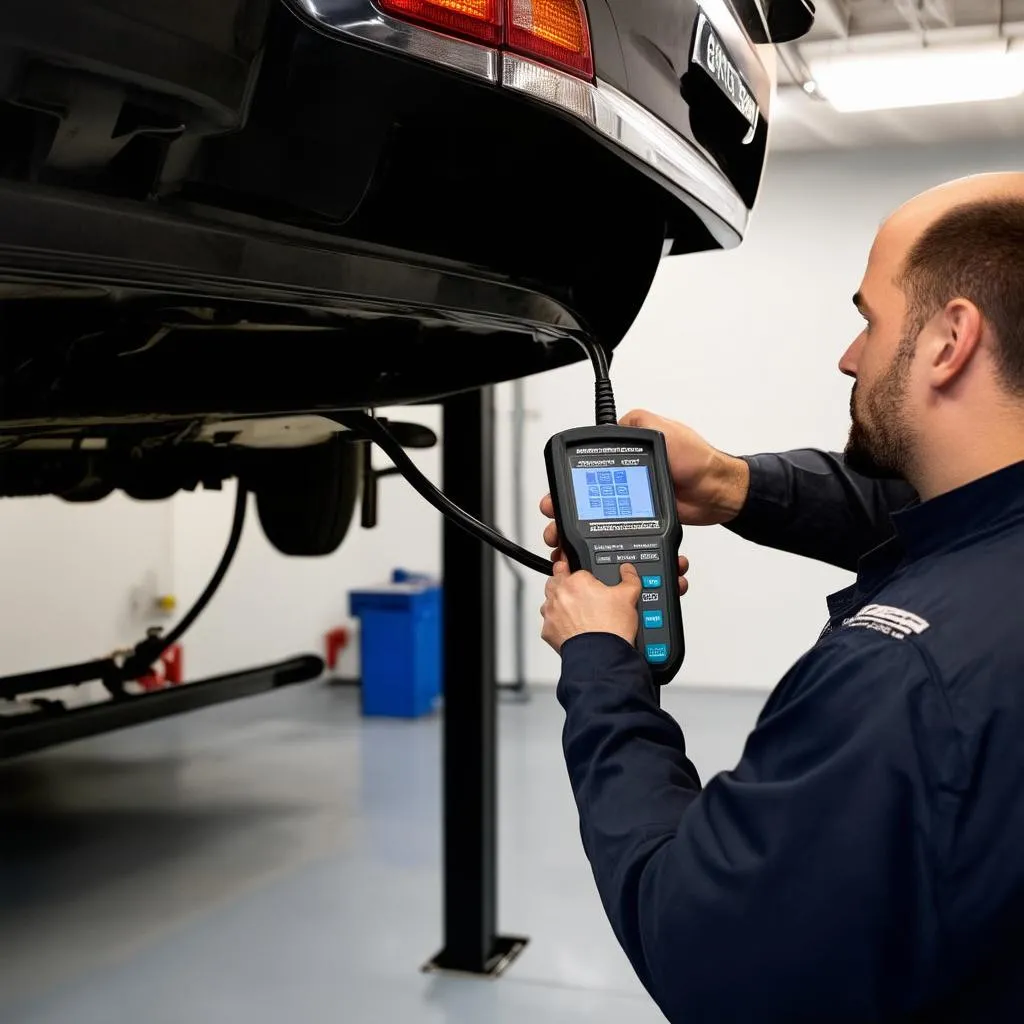Demystifying VCDS Codes P0420 and P1128: A Guide for VW and Audi Owners
Imagine this: you’re cruising down the highway, enjoying the smooth ride in your trusty Volkswagen or Audi, when suddenly, the check engine light throws a wrench in your plans. A quick scan with your VCDS reveals two cryptic codes: P0420 and P1128. Don’t panic! These codes, while concerning, are quite common and often manageable. This article will delve deep into the meaning of VCDS codes P0420 and P1128, explore possible causes, and provide solutions to get you back on the road with confidence.
Understanding the Codes: What are P0420 and P1128 Telling You?
P0420: Catalyst System Efficiency Below Threshold (Bank 1)
This code indicates that the catalytic converter, responsible for reducing harmful emissions, isn’t working efficiently. Think of it like this: your car’s exhaust system is like a digestive system, and the catalytic converter is the stomach. When it’s not working properly, your car can’t “digest” the exhaust fumes properly, leading to increased pollution.
P1128: Long Term Fuel Trim – System Too Lean (Bank 1)
P1128 suggests your engine is running lean, meaning there’s too much air compared to fuel in the air-fuel mixture. This imbalance can be likened to trying to bake a cake with too much flour and not enough sugar – the result is far from ideal.
But why are these codes appearing together? Often, a malfunctioning catalytic converter (P0420) can trigger a lean fuel mixture (P1128) as the engine struggles to compensate for the inefficient exhaust flow.
Unraveling the Causes: Why am I Seeing These Codes?
Several culprits can be responsible for triggering these codes, ranging from minor issues to more complex problems:
- Faulty Oxygen Sensors: Oxygen sensors act as the “eyes” of your car’s emissions system, monitoring the oxygen content in the exhaust. A malfunctioning sensor can mislead the engine control unit (ECU) into thinking the catalytic converter isn’t working efficiently, even if it is.
- Catalytic Converter Failure: Over time, the internal honeycomb structure of the catalytic converter can become clogged or damaged, hindering its performance and triggering the P0420 code.
- Vacuum Leaks: A leak in the intake system can disrupt the air-fuel mixture, leading to a lean condition and triggering the P1128 code.
- Faulty Fuel Injectors: Fuel injectors responsible for spraying fuel into the engine cylinders can become clogged or malfunction, resulting in an improper air-fuel mixture.
Diagnosing and Fixing the Problem: Getting to the Root Cause
Diagnosing the exact cause of these codes requires a systematic approach:
- Visual Inspection: Start by visually inspecting the exhaust system for any obvious leaks, damage, or loose connections.
- Scan for Other Codes: Sometimes, additional codes may be present that can provide further clues about the root cause.
- Check Oxygen Sensor Readings: Using your VCDS, monitor the oxygen sensor readings to identify any inconsistencies that might indicate a faulty sensor.
- Inspect for Vacuum Leaks: Use a carburetor cleaner or a smoke machine to check for vacuum leaks around the intake manifold, hoses, and gaskets.
- Test Fuel Pressure: Ensure the fuel pump and fuel pressure regulator are functioning correctly.
Prevention is Key: Keeping Those Codes at Bay
Like most car problems, prevention is often the best medicine. Here are a few tips to keep your VW or Audi running smoothly and avoid those dreaded VCDS codes:
- Regular Maintenance: Follow the manufacturer’s recommended maintenance schedule, including timely oil changes, spark plug replacements, and air filter inspections.
- Use High-Quality Fuel: Using high-quality fuel can prevent the buildup of deposits that can clog fuel injectors and damage the catalytic converter.
- Address Engine Issues Promptly: Don’t ignore other engine-related problems, as they can eventually impact the emissions system.
 car exhaust system diagram
car exhaust system diagram
 Mechanic using a diagnostic tool on a car
Mechanic using a diagnostic tool on a car
Remember, while these codes can be concerning, they are not the end of the world. With the right knowledge and tools, you can diagnose and address the problem effectively. And if you need expert assistance, don’t hesitate to contact us via WhatsApp at +84767531508. Our team of automotive specialists is available 24/7 to provide guidance and support for all your diagnostic needs.
This article provides general information and should not be considered professional advice. Always consult with a qualified mechanic for diagnosis and repair of your vehicle.
